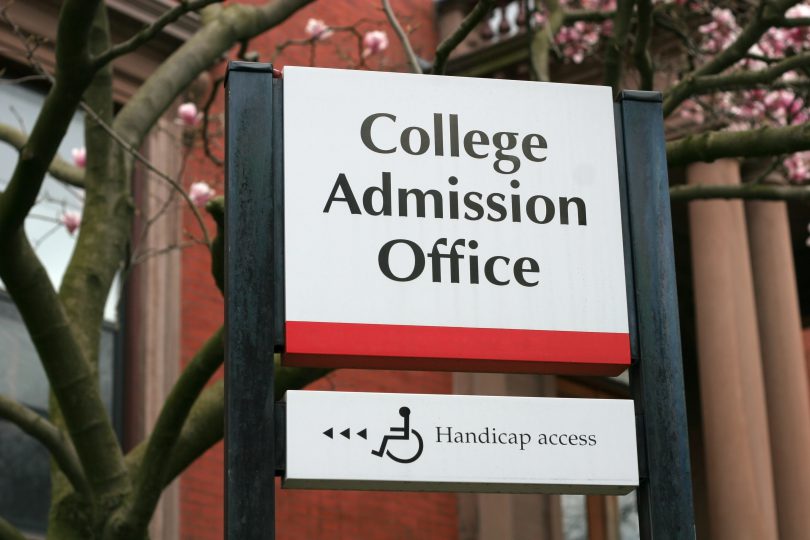A Common Misstep
A common misstep in the recruiting process happens when players don’t target the right schools. These players only target schools where the standard of play is too high for their skills. They may ignore interest from schools where their skillset does match up well, thinking they can “do better.” You should treat all interest seriously and make sure you do your research on every program. With over 1,600 college baseball programs, there are many schools you will not know about. With so many programs, how can you make sure you are targeting the right schools for your skill level? It turns out that this question doesn’t have one answer. That’s why so many recruits get it wrong! Luckily, we have done the research for you! Here are five things you can do to target the right schools and find the appropriate level of college baseball for your skill set.
5 Ways to Target the Appropriate Level
Get an Honest Feedback
Seek honest and objective feedback on your playing ability. We have an entire article on how you can get honest, objective feedback and why it’s important. In order to create a plan to reach the standard of play for the level of college baseball you want to pursue, you have to know where you stand and where you need to improve. An inflated perspective of your abilities may make you feel better about yourself. However, it’s a recruiting trap that can set you up for failure. Seek the truth and embrace it as motivation to keep improving in areas where you may fall short.
Get Educated
Educate yourself on the various levels of college baseball. To do this properly, you are going to have to do a good job of researching more than just D1, D2, D3, NAIA and JUCO baseball. Each of these divisions or organizations have different levels of play. For example, teams in the Division I Power-5 Conferences have a different standard of play than mid-majors or under-funded Division I programs. Similarly, there are programs in every level of college baseball (JUCO and D3 included) that could compete with D1 programs. With such a diverse blend of talent, it makes doing your homework on schools of interest even more important. It may be that you should target D1 schools, but maybe not the D1 schools you see on ESPN. We’ve covered the importance of researching schools and coaches here. The same research should be done on conferences as well. The bottom line is you never want to assume anything and you should always make informed decisions in the recruiting process.
Nail the Academic Piece
We harp on this often. You may be wondering how this has anything to do with targeting schools that fit your ability. Getting admitted into school on your own will give you a better chance to end up at a school that may be a bit of a reach for you. It also gives you something to use as leverage when trying to contact coaches late in the game. When you contact a school and let them know you are already admitted, you may improve your chances of being able to walk-on. At least you can ask to speak with the coach about any opportunities you may have.
Cast a Wide Net Early
We talk about working from wide to narrow. At the beginning of the recruiting process when you start building your list of schools of interest, cast a wide net and explore ALL available options. As you move through the recruiting process, you will get a better understanding for what you want out of a college baseball experience. After you understand which types of schools fit your skills and abilities, you can narrow your list. Many make the mistake of taking too narrow a view early and trying to expand it late. It’s okay to have dream schools and big goals, keep those programs at the top of your list. But early, cast a wide net and consider a broad range of programs and work to narrow your focus late. You won’t regret exploring all the options college baseball has to offer.
Be Patient
You need to build a recruitable skill set before you will be recruitable. For most players, this means being patient in the recruiting process and allowing time to work, mature, add strength, and improve on-field skills. You want to wait until you can put your best foot forward before reaching out to coaches and seeking exposure. For most, this means waiting until junior year to start reaching out to coaches and seeking exposure. If you start receiving interest from college coaches, that is also a good indication that you are ready to seek exposure from schools with similar levels of play. We have an entire article devoted to understanding when to contact college coaches, how to better understand the recruiting timeline that is right for you, and when to seek exposure in the recruiting process. All of this information is helpful in making sure you don’t get crossed off a coach’s list before your skills are ready to be evaluated.
Finding the Right Fit
If you are familiar with KPB, it’s likely none of these 5 steps is completely new to you. Players who are informed, honest with themselves, work hard, and relentlessly pursue a program fit get rewarded. The key is that you want to make informed decisions throughout the recruiting process. If you do your homework, you can target the right schools. Let the standard of play for each program be your guide. When you have a realistic view of your skill set, keep an open mind, and are willing to work your tail off to improve, you are well on your way to finding a college baseball fit!






